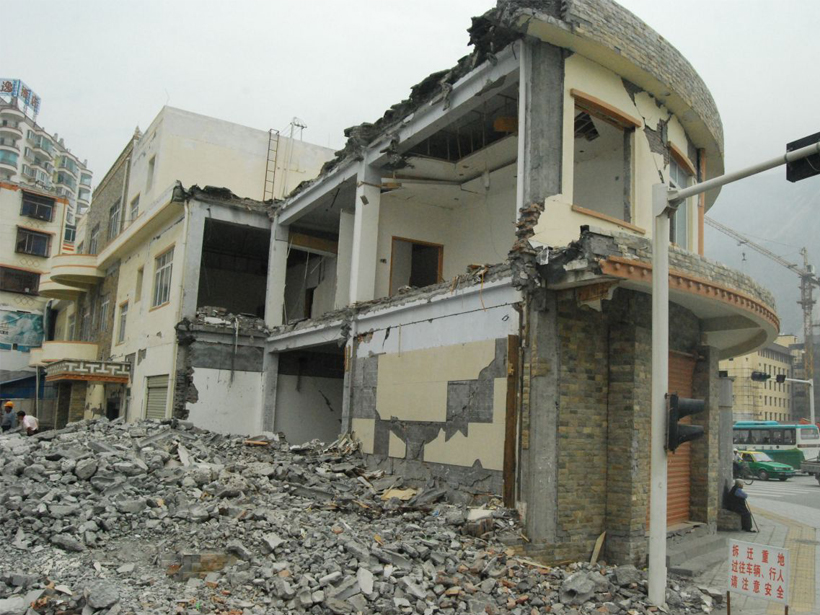Source: Geophysical Research Letters
On 12 May 2008, a magnitude 7.9 earthquake struck China’s Sichuan Province, causing approximately 70,000 deaths and leaving more than 18,000 people missing.
The quake, named for its epicenter in Wenchuan County, occurred around 2:30 p.m. local time and was, in many ways, a surprise to scientists studying the region’s geology. GPS data obtained from the area before the Wenchuan event gave no indication that so much energy was building up below Earth’s surface. Since the catastrophe occurred, scientists have been collecting more data and rethinking the physics of the region.
Earth scientists often attempt to record GPS data from Earth’s surface to infer how much activity is occurring below. As tectonic plates slide and grind against each other, they scrunch Earth’s surface into mountain ranges and other geological features. A suitably sensitive GPS system can track this deformation; scientists can then use these data to calculate crustal shortening—an important indicator of earthquake potential that measures how much overlap and folding is occurring in Earth’s crust. Prior to the Wenchuan event, shortening was thought to be near zero in the region, but the occurrence of such an enormous quake suggested otherwise.
Now Thompson et al. have created expanded mathematical models, which include new variables like earthquake cycle and topographic effects. They concluded that the shortening rate in the region is closer to 5.7 ± 1.5 millimeters per year or more.
Another important addition to the model is the inclusion of a detachment fault 20 kilometers below Earth’s surface. Not only do the new models predict the buildup of elastic energy in Earth’s crust, they also indicate that earthquakes such as Wenchuan’s may be more common than previously thought—occurring as often as often as once every 600 years. (Geophysical Research Letters, doi:10.1002/2014GL062833, 2015)
—David Shultz, Freelance Writer
Citation: Shultz, D. (2015), New models explain unexpected magnitude of China’s Wenchuan quake, Eos, 96, doi:10.1029/2015EO034247. Published on 17 August 2015.
Text © 2015. The authors. CC BY-NC 3.0
Except where otherwise noted, images are subject to copyright. Any reuse without express permission from the copyright owner is prohibited.

